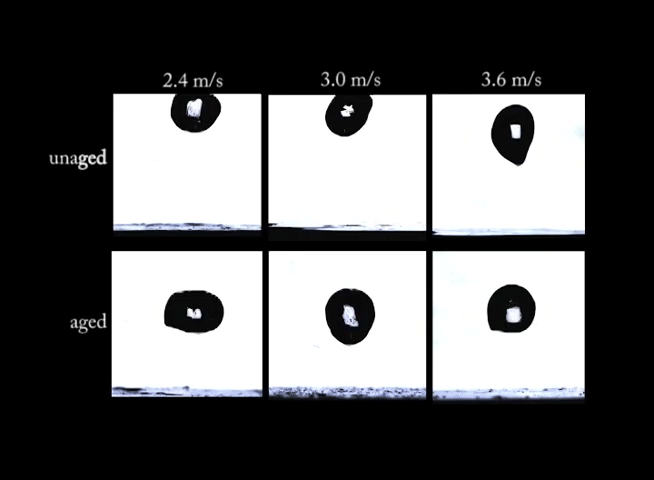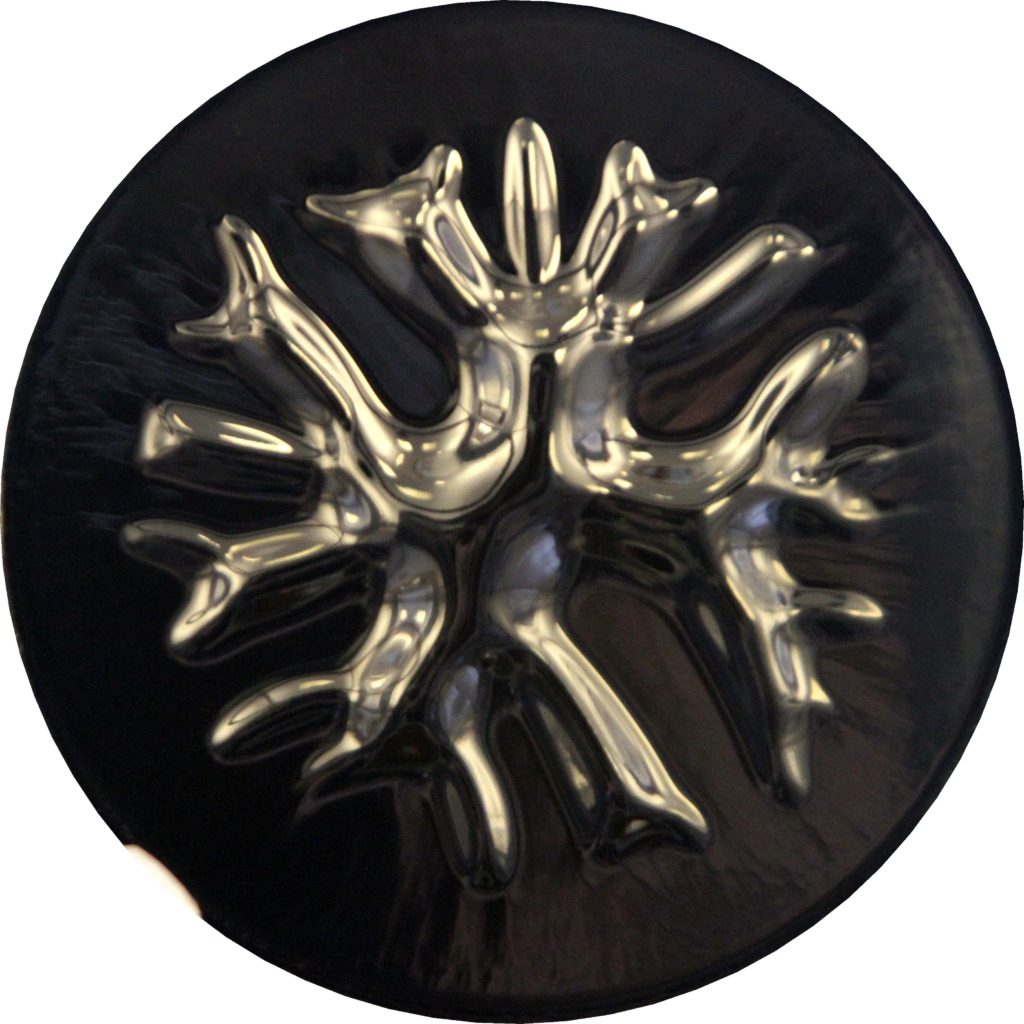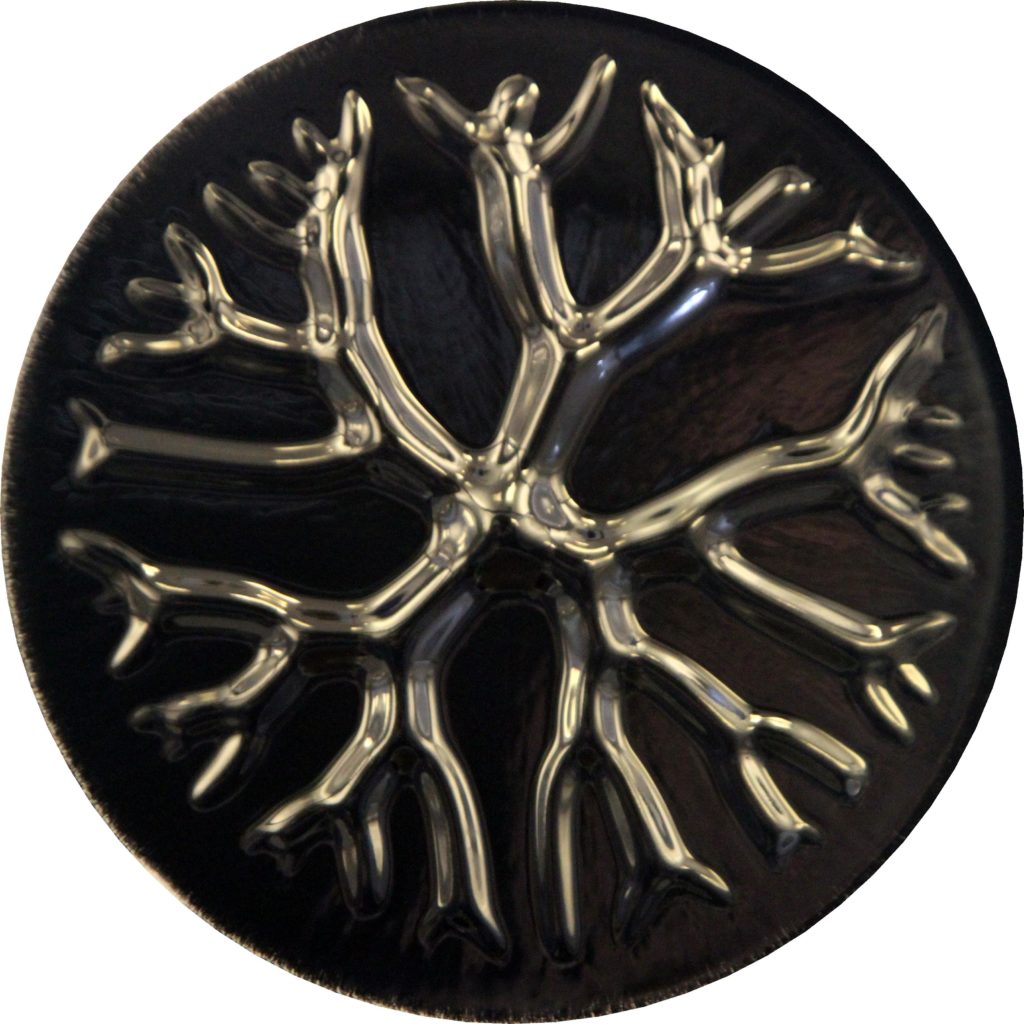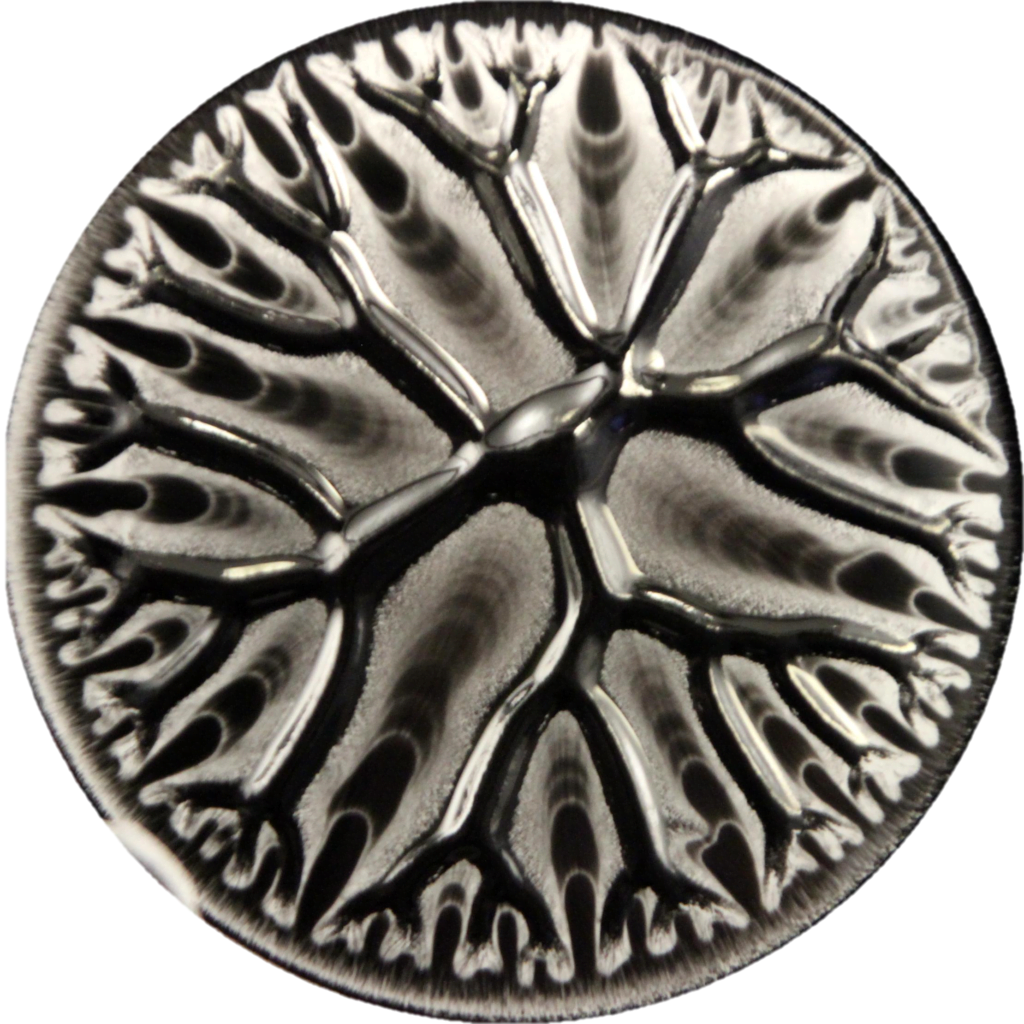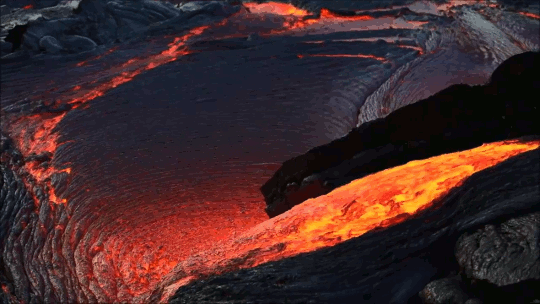We’ve all experienced the frustration of ketchup refusing to leave the bottle or toothpaste that shoots out suddenly. These materials are yield stress fluids, which transition from solid-like behavior to liquid flow once the right amount of force is applied. A new study suggests that — despite their wide range of characteristics — these fluids share a universal relation: their yield transition (when they start to flow) depends on their characteristics when at rest. Interestingly, this relationship seems to hold not only for polymeric fluids like the one in the study but also nonpolymeric ones. (Image credit: haideyy; research credit: D. Keane et al.; via APS Physics)
Tag: yield-stress fluid

Swimming With Corkscrews
For many microswimmers, like bacteria or spermatozoa, swimming through common fluids is like moving through mud. Unless they can produce enough thrust to overcome a fluid’s yield-stress, they are effectively stuck in a solid. A recent study breaks down exactly what a microswimmer has to manage, assuming they use a helical, corkscrew-like tail for propulsion.
The first barrier is creating enough force to be able to rotate in the fluid, but that alone is not enough to ensure forward motion. Once rotating, the swimmer’s thrust has to be large enough to deform the fluid around it. Without that, the swimmer is stuck. And, finally, once they’re moving, the swimmer’s tail pitch determines how fast they can move and whether the fluid’s characteristics slow it down.
The researchers hope their work can shed light on propulsion for bacteria in the body, as well as larger creatures like burrowing earthworms and fruit-invading parasites. (Image credit: SwedishStockPhotos; research credit: F. Nazari et al.; via APS Physics)

Inside Old-Fashioned Butter
Today’s video is a little different: it’s an inside look at a butter-making shop in France that uses traditional nineteenth-century methods to process the butter. Watching workers fold and shape 50 kilos of butter is mesmerizing, and it highlights the amorphous, pseudo-fluid nature of the butter. Yes, the butter holds its shape like a solid, but it’s a soft solid at best and certainly shows fluid-like qualities when force is applied. A word of warning: you might not want to watch this on an empty stomach! (Image and video credit: Art Insider; via Colossal)

Snail Locomotion
Snails and other gastropods move using their single muscular foot and a viscoelastic fluid they secrete. Muscular waves in the foot run from tail to head and are transmitted to the ground through the thin, sticky mucus layer without the snail ever fully detaching from the surface. The characteristics of this mucus layer are critical to the snail’s locomotion. As a movement cycle begins, the mucus behaves like an elastic solid. As the muscular wave approaches, it shears the fluid, increasing its stress and ultimately reaching the yield point, where the gel begins to flow. Once the wave passes, the mucus quickly transitions back to its elastic solid behavior. The net result of each cycle is an asymmetric force that propels the snail forward while keeping it adhered to whatever surface it’s crawling on.
Many animals rely on similarly complex fluids to move, attack prey, defend against predators, or enable their reproduction. Check out this review article for more examples. (Image credit: A. Perry; see also P. Rühs et al.; submitted by Pascal B.)

Aging Fluids
If you’ve ever left a sealed container of Playdoh untouched for months, you know that there’s a big difference between the fresh stuff and what’s left in that can. Aging can have big effects on non-Newtonian fluids. In this video, we see drops of a synthetic clay impacting at different speeds. In the top row of images, the clay is fresh and unaged; on impact, the clay forms large crown-like splashes. In the bottom row, however, the aged clay behaves quite differently. Instead of a splash, the drops make more of a splat. (Image and video credit: R. Ewoldt et al.)

Branching Gels
If you sandwich a viscous fluid between two plates, then pull the plates apart, you’ll often get a complex branching pattern that forms as air pushes its way into the fluid. But the exact results depend strongly on what kind of viscous fluid you used. A new study looks specifically at what happens when that fluid is a yield-stress gel.
Yield-stress fluids behave like a solid until a critical amount of force causes them to flow. Think about your toothpaste. When you take the cap off, the toothpaste stays put until you squeeze the tube enough to make it flow. The gels used in this experiment behave similarly.
The researchers found that their gels required a critical energy input in order to branch and flow. If the energy applied in pulling the plates apart was too low, no branching occurred (Image 1). But beyond that critical energy, separating the plates created intricate branching patterns consistent with those seen in simpler, Newtonian fluids. (Image, research, and submission credit: T. Divoux et al.; via APS)

Salty Comets
Many of the products we use every day in our homes behave like solids until the right force is applied. These yield-stress fluids are like hand sanitizer – strong enough to suspend millimeter-sized particles when still but capable of flowing easily when pumped. In hand sanitizer, this is because the fluid is made up of swollen microgel particles that are jammed together. To rearrange, they need a certain amount of force applied. The weight of the sugars, capsules, and particulates added to the product aren’t heavy enough to move the jammed microgels, so they stay suspended.
But researchers found that if they add a salt crystal of the same size and weight (bottom image), it sinks steadily through the gel. The salt’s velocity is constant; it doesn’t change with size as we might expect. That’s because it’s not falling by forcing the microgel particles to move. Instead, its salinity forces the microgel to release its absorbed liquid; basically, it’s collapsing the jammed particles. It falls steadily because it takes a given amount of time to collapse each gel particle. (Image credits: microgel – N. Sharp; salt comet – A. Nowbahar et al.; research credit: A. Nowbahar et al.)

Inside Fondue
Cheese fondue is a complex – and delicious – Swiss delicacy. The perfect fondue requires the right mix of ingredients and preparation to get the rheology – the flow character – just right. Fondue is a colloid, a fluid containing a mixture of suspended insoluble particles.
The major components, rheologically speaking, are fat globules and casein proteins from the cheese, ethanol from the wine, and some added starch. Left on their own, the fat and casein tend to separate, something that’s sure to ruin the fondue. Adding the right amount of starch prevents that separation and keeps the fondue together. The viscosity of fondue is very important as well. If it’s too runny or too gummy, the mouthfeel will be wrong and it may not stick to the bread when dipped. Adding wine decreases the viscosity.
All in all, the quality and perception of a good fondue relies heavily on its rheological character. Without the right proportion of ingredients to set the perfect viscous and chemical character, the dish literally comes apart. (Image credit: Pixabay; research credit and submission: P. Bertsch et al.)

Forming Craters
Asteroid impacts are a major force in shaping planetary bodies over the course of their geological history. As such, they receive a great deal of attention and study, often in the form of simulations like the one above. This simulation shows an impact in the Orientale basin of the moon, and if it looks somewhat fluid-like, there’s good reason for that. Impacts like these carry enormous energy, about 97% of which is dissipated as heat. That means temperatures in impact zones can reach 2000 degrees Celsius. The rest of the energy goes into deforming the impacted material. In simulations, those materials – be they rock or exotic ices – are usually modeled as Bingham fluids, a type of non-Newtonian fluid that only deforms after a certain amount of force is applied. An everyday example of such a fluid is toothpaste, which won’t extrude from its tube until you squeeze it.
The fluid dynamical similarities run more than skin-deep, though. For decades, researchers looked for ways to connect asteroid impacts with smaller scale ones, like solid impacts on granular materials or liquid-on-liquid impacts. Recently, though, a group found that liquid-on-granular impacts scale exactly the way that asteroid impacts do. Even the morphology of the craters mirror one another. The reason this works has to do with that energy dissipation mentioned above. As with asteroid impacts, most of the energy from a liquid drop impacting a granular material goes into something other than deforming the crater region. Instead of heat, the mechanism for dissipation here is the drop’s deformation. The results, however, are strikingly alike.
For more on how asteroid impacts affect the moon and other bodies, check out Emily Lakdawalla’s write-up, which also includes lots of amazing sketches by James Tuttle Keane, who illustrates the talks he hears at conferences! (Image credits: J. Keane and B. Johnson; via the Planetary Society; additional research and video credit: R. Zhao et al., source; submitted by jpshoer)

Galapagos Week: Lava Flows
The Galapagos islands are geologically similar to the Hawaiian islands; both are archipelagos that were born and continue to be formed by lava flows originating from a volcanic hot spot. Lava from this type of volcano is high in basalt content, which affects both its flow properties and the formations it creates. Geologists have actually borrowed words from the Hawaiian language to describe the two main kinds of lava formations seen in basaltic flows: pahoehoe and a’a.
Pahoehoe formations tend to be relatively smooth and often leave behind a pattern of rope-like coils (below). In contrast, a’a lava features are sharp, rough, and challenging to traverse. Both flows are gravity-driven, and which features a given eruption forms depends on many factors. Many flows will even begin with a pahoehoe section that stretches for several kilometers before transitioning to an a’a structure. Researchers believe the transition occurs when the lava crystallizes enough to develop a yield-strength, meaning that it will behave like a solid until enough force is applied to make it flow again. Toothpaste, ointment, and mud are similar so-called yield stress fluids which will only flow after a critical force is applied. (Image credits: lava flow – Epic Lava Tours, source; pahoehoe lava – J. Shoer)
Galapagos Week continues tomorrow here on FYFD. Check out previous posts.








